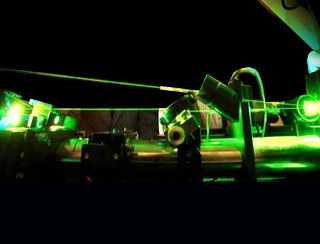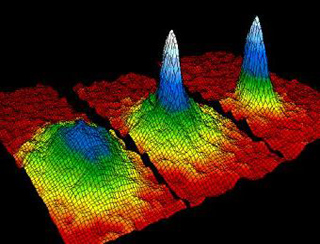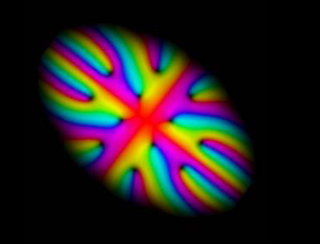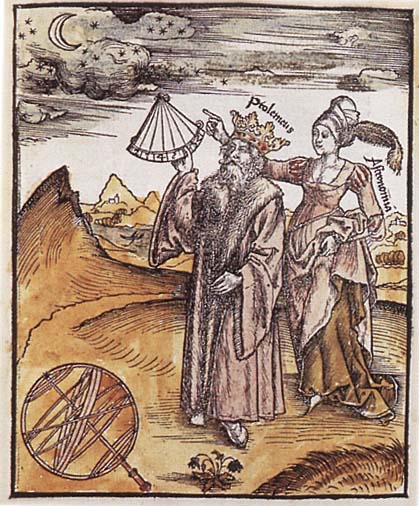

project narrative
Given: The eternal wish of reversing time, as it is deeply rooted in the human
psyche. The longing for reversing decisions that had proven to be wrong, to
make passed away loved ones come alive again as well as reversing one’s
own life age and finitude.
TIME/OUT OF JOINT presents a collection of different phenomena of time reversal
and time manipulations, ranging from slit scan photography to quantum physics
and gerontology.
In the first place, TIME /OUT OF JOINT investigates time reversal as a scientific,
fact-based event and features a number of different cases from the realm of
particle- and astrophysics where this paradox is well-known: Richard Feynman's
famous discovery of time reversal in negative charged particles, as well as
an experiment known as "Bose-Einstein Condensation" and other means
to enable a temporal stopping of light speed.
Mikhail Lutin (Harvard), John Cramer (Univ. of WA) and Wolfgang Ketterle (MIT).
From here the project expands into the field of theoretical physics, with
critical views towards quantum mechanics, string theories and the time travel
- (as a theoretical model - not as a machine)
In molecular biology the attempt of time reversal finds its interpretation
in "age reversal" - specifically the area in gerontology that applies
therapeutical stem cell cloning. The pioneer of this field of Michael West and his current company BioTime who discusses his vision of new medicine based on stem cell cloning. The New York journalist Stephen Hall discusses
the existing practices in this field most notably Advanced Cell Technology
and their ambitious goal to not only stop but even reverse the cellular side
effects of metabolism through stem cell therapy.
British biologist and gerontologist Aubrey DeGrey also joins this debate form the viewpoint
of an convinced "life extension"-canidate, that combines all existing
therapies against the human aging process into one powerful remedy.
In addition, several cultural fields are featured that also have a direct
connection to time reversal: Digital Slit scan photography by Israeli media artist Romy Archituv and experimental cinema
feature a lot of puzzling time-reversal aspects, dance (New York choreographer Sara Rudner) and sport movements
are investigated in reverse, while reverse speech by actor and musician Ari Gorman , and sound mirroring (developed by José Moura) offer
similar analogies in the field of music and auditory research.
Finally, the film features two pholosophers as commentators throughout the film. They create the necessary connecting elements by linking science and culture. Manuel Delanda explains and applies his own time creation theory paralleled with Gilles Deleuze Time/Image and Sylviane Agacinski discusses "Media Time" in political and technologocal phenomena of the everyday.
The visual key element for this project is a slow and steady traveling shot,
that continues virtually throughout the entire film, showing a carefully choreographed
succession of movements - all in reverse.
This atmospheric over-all element creates the right framework for this unusual
topic, that requires a particular form of visual transcendence through which
the viewer can perceive the event of inverted time – like the gaze out
of a window of a train that traveling back into the past.
This constant movement also helps to interconnect nine cities around the world.
These cities are the locations where the interviewees of this project live
or work. An visual patchwork of cut-out elements from each location create
a unique form of transitions, whose function is to interweave different places
and cultures.
stories / history
There are short staged (narrative) elements in this film. The appears
as inserts will function as a historic boomerang - they propel the film out
of its own cinematic time into the history of time reversal and its allegories,
emerging in surreal short stories and novels such as Camille de Flammarion’s
“Lumen” (1876) and Raymond Roussel’s “Locus Solus”
(1918).
These stories on sound and light manipulations bundle itself in the adventurous
history of the determination of light velocity, covering over a century of
science pioneers, Galilee, Maxwell, Michelson, Feynman and Einstein, it leads
to seven contemporary scientist and thinkers of entirely different fields,
for whom the reversal of time manifests a central topic in their work.
Unlike in a conventional documentary we tried to develop possibilities for
transforming most aspects of these theories into a visual language and to
distill their comments and insights into brief statements of no more than
3 - 4 minutes.
Each of interviewee will appear in the city and place where they work and/or
live. Significant locations (such landmarks) or objects considered as inspiring
sources for the particular project will be worked into the individual sequences.
participants
The project includes the participation of film makers, photographers, media artists and performance artists.
All have intensively investigated the phenomenon of time-flow and reversibility in cinematographic movements in optical scanning process, in sound, speech and even in dance -
Ladislav Galeta is a film maker and theorist from Zagreb.
He is best known for a symmetrical-mirrored structural
film entitled "PyrAmiDàS " (1984) in which a train moves
towards a fictive turning point and mirrors itself through the application
of numerous parameters. At its very middle, the film has a blank frame surrounded
by the layers of the color spectrum. In another experiment "Piano Forward
Backward " Galeta investigates the phenomenon of double reversibility
in opposition to normal movement. A piano player plays a Chopin piece four
times, always with a different “direction” of player and camera.
In the last combination the pianist plays backwards while he is being recorded
backwards. Galeta investigates on the notion of “eternal return”
which he pursues not in a religious approach but rather following Joyceian
concepts of circularity.
Sara Rudner is a New York post-modern choreographer known for extensive time-experiments in dance (endurance pieces, forward-backward figures) , Ari Gorman a natural
backwards speaker, who can instantaneously reverse words as well as Harry Pakmer, a performance artist from Hull, England who has walked several North
England bridges backwards.
modi
operandi : building stories
Romy Archtetuv’s “story” is a collaborative experiment
that involves the phenomenon of the reversed time exposure he achieved with
be re-working the existing installation work “Be Now Here” by Michael Naimark. This 360degree film that Naimark shot at four Unesco World Heritage sites. Archituv "time-sliced" the original material and produced an interactive version. It
is an endless film strip that (like a opto-mechanical slip-cam) records movements as abstract shapes - objects that travel in the oposite direction of the scanner movement are
exposed in reverse. (letters shown mirrored in front of a “normal”
background) These slitcam films will be digitally scanned and collaged with
moving imaged from the same location.
Ladislav Galeta is known for elaborate
drawings of his theories. With him we developed a whole scene in which he
is drawing several time-line diagrams on a giant chalk board.
The chapter of physics we plan to open with Prof. Mikhail Lutin's experiments on the reduction of light velocity utilizing Bose-Einstein Condensation. The visualization of Mr. Lutin's research will be a computer-aided three-dimensional
drawing of her laboratory set up, as camera circles slowly around it. The
construction will appear as a 3-D wireframe drawn with light into space similar
looking like long-term exposures with open-shutter.
(This appearance will perfectly refer to her achievement of slowing down light
velocity).
The segment on sound reversal we situate around auditory researcher José Moura, Professor of Electrical and Computer Engineering, Carnegie Mellon University,
Pittsburgh who experiment with the so-called time-reversal mirrors.
The interview will be inter-cut with a narration by Doulas Kahn, as well as footage from Paris, with local references
to the city. Within the cityscape of Paris two relevant stories (culled from Kahn's essay) on Time Reversal
will be embedded: A partial re-enactment of Raymond Rousell's "Locus
Solus" as well as an medieval narrative "LUMEN" by Camille
Flammarion. Soul travelers fly through space faster than light and see events
on earth such as the battle of Waterloo -in reverse.
Some of the already completed interview segments were left open to the collaborative
influence of the participants, in particular of Ladislav Galeta, Sarah Rudner and Ari Gorman. In both occasions we already experiences a very positive response
through this kind of open work process. The best suggestions for visualizing
complex ideas always come from the maters themselves.
form
and format
The main visual element of TIME/OUT OF JOINT consists of a slow moving, right-to-left
tracking shot going in reverse, (deliberately at the opposite direction of
the Western reading direction.) It will last all the way through the video,
which is estimated to 60 min. length.
The camera traveling speed is approx. a walking speed of 2 mph. This traveling
will combine the seven locations in long-lasting dissolves. All other imagery
will be superimposed on top of the traveling location to an degree that each
story will be presented in hard, straight cuts and -as much as the subject
allows- in a counter-movement (left-to-right) in order to create a certain
“friction” with the background. During these superimposition the
traveling background will always remain visible but only to a degree that
it is perceived as very soft in shadowy shapes.
The locations will feature objects and architecture that is suitable for side-way
movement. The motor system on a long-lasting track shot (approx. 12 minutes
each in 2 mph) will ensure continuous motion at a regulated speed. The transitions
from one location to another will appear seamless and will be supported by
a masking technique, achieved in digital compositing of multiple video layers
in which not merely one image slowly dissolves into the other but in which
the images are broken up in parts which dissolve individually at different
moments: i.e. first a street into a river, then houses into trees, etc.
TIME/OUT OF JOINT is being shot in two HD Formats, HDV and XDCam. For the traveling
landscape shots this format is in particular very beneficial.
One additional element become highly interesting additional experiments:
The slow-speed traveling shots allow an optional 3D viewing effect called
Pulfric Vision that works with a single filter and has to do with time manipulation
as well. In an interesting connection to light velocity reduction in the story
of "Lumen" and Prof. Lutin’s experiment, this 3D effect is based
on slowing down the speed of the vision by using a filter or colored sunglasses
(only on the right eye) It is activating only the night vision receptors in
the retina. The brain receives two different images simultaneously , one with
a time delay of approx 0.5 second. The bypassing objects are therefore seen
in two different angles and appear three-dimensional.
Caspar Stracke
New York 2011





